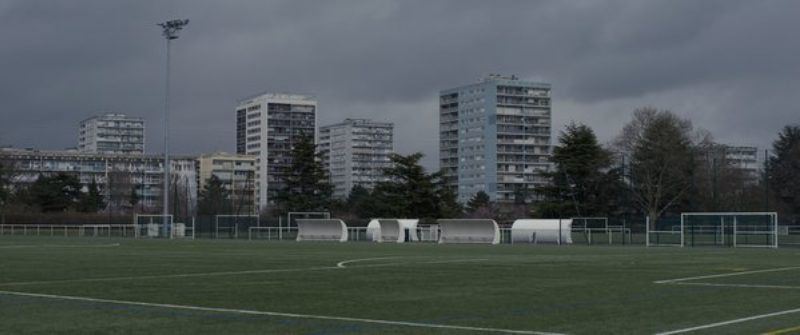
AKA Jihadi by Eric Baudelaire
AKA Jihadi builds on a link between some of my previous work and the events that recently occurred in our lives. I started thinking about this film more than a year ago, before the events of the 13th of November and before those of Charlie Hebdo in January 2015. In view of what is at stake, it has become urgent for me to get down to work. With this project, more than ever, I want to make a film that affirms the position of trying (not) to understand. Or, in the words of Pierre Zaoui, to make a film that “aims to understand and not to understand at the same time—to understand up to the point that one no longer understands—and also to show, refusing to under-stand or explain, so that with a dreadful feeling of confusion we are surprised to find ourselves understanding, discovering a subtle sympathy, telling ourselves that maybe monstrosity is our shared condition.”
SPECULATIVE SYNOPSIS
In 2012, a young man native of Val-de-Marne, flew to Cairo without telling his close ones. It is known that he eventually joined the ranks of the Islamic state, and that he facilitated the crossing of the Syrian border for several friends from Val-de-Marne who came to join him. He said that he went to Syria to support the Syrian people in their struggle against Bashar El-Assad. He also said that he did not engage in combat, but there is a picture of him in Syria, Kalashnikov in hand, and wiretaps suggesting that he did. By way of explanation at his trial, which started three weeks after the events of November 13, he simply said “I was looking for a purpose in my life.” He is currently serving a nine-year sentence. This young man grew up in Thiais in a housing estate. His education at the Guillaume Apollinaire School went well. He took a degree in IT, and then worked as a deliverer-driver. Clean record; no trouble with the law. His family and relatives are struggling to understand the path that led him to Syria and then to prison. AKA Jihadi attempts to trace his route implementing a cinematic approach called “landscape theory.”
THEORETICAL PROPOSITION
The so-called landscape theory (fukeiron in Japanese) was imagined for the first time in 1969 for the film AKA Serial Killer. The latter intended to clarify the enigma of a young Japanese, Norio Nagayama, who killed five people with a gun stolen from a US Army base. He never explained his actions, even after his arrest and trial. As they were searching the locations for a film based on these events, avant-garde filmmaker Masao Adachi and his co-directors came up with a radical idea: the footage from their location scouting was enough, it was the film. AKA Serial Killer consists of a series of landscapes from the places where Nagayama lived or travelled during the 19 years of his short life, before the murders in Tokyo.
This theoretical proposition interested me a lot when I shot my first feature film The Anabasis of May and Fusako Shigenobu, Masao Adachi and 27 Years Without Images in 2011. In AKA Serial Killer the radicality of the concept is the object of the film and I’m not sure that one knows more about Nagayama’s murders after watching it. It was with an equally free spirit that I applied to the lives of Masao Adachi and May Shigenobu the landscape theory in The Anabasis, retracing their biographical journey, thus projecting the theory onto the theorist. But it was a second-degree use of the theory, more conceptual than literal.
Since The Anabasis, I have been haunted by the idea of rigorously testing landscape theory. No longer considering it as a proposal, a provocation, but using it in a very sincere manner for a film, which has never really been done. I would like to test this theory by applying it to the main character of AKA Jihadi, considering it a means to illuminate his path, and thereby open a discussion on the redefinition of jihadism in the Daech era.
ERIC BAUDELAIRE is a visual artist and filmmaker. His films Letters to Max (2014), The Ugly One (2013) and The Anabasis of May and Fusako Shigenobu, Masao Adachi, and 27 Years Without Images (2011) were shown at the FIDMarseille, Locarno, Toronto, New York and Rotterdam film festivals. His research-based practice also unfolds as installations incorporating photography, printmaking, performance, publications and screenings. Recent solo exhibitions were held at the Fridericianum in Kassel, Berkeley Art Museum, Kadist Art Foundation in San Francisco, Bétonsalon in Paris, the Bergen Kunsthall, the Beirut Art Center, Gasworks in London, La Synagogue de Delme in France and The Hammer Museum in Los Angeles. He has participated in Sharjah Biennial 12, Seoul Mediacity Biennial, the Yokohama Triennial, the Taipei Biennial, Berlin Documentary Forum 2, La Triennale in Paris and the Baltic Triennial. His films and installations are in the collections of the Reina Sofia Museum in Madrid, the MACBA in Barcelona, the Centre Pompidou in Paris, M+ in Hong Kong, the Museum of Modern Art and The Whitney Museum of American Art in New York.
Production: Tabakalera, Khiasma, Centre Pompidou, La Biennale de Montréal, Fondation Kadist
Stage of development: completed
Distribution: LUX
Involved Participants |
|||
|---|---|---|---|
| Eric Baudelaire | |||
